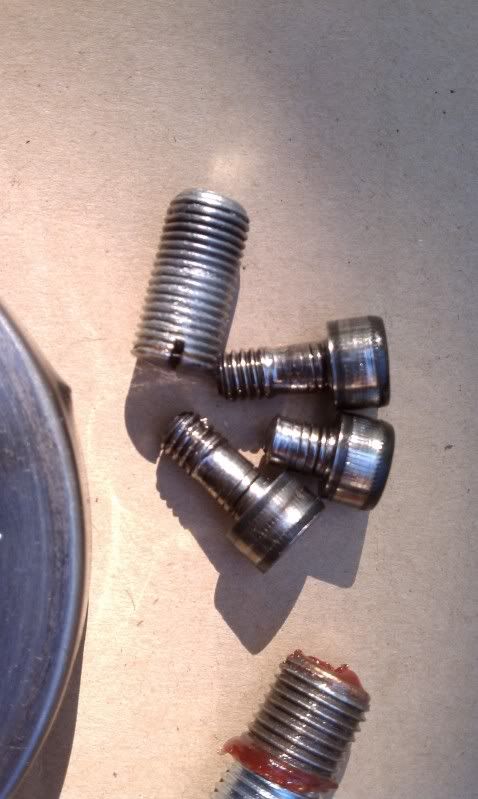The main problem with removing the flywheel is that the Bolt that threads into the crank and holds the flywheel on is 14mm and the threads in the flywheel for removing it are only 16. This means you only have 1mm on each side of the threaded hole going into the crank to push against. If you try to just screw a bolt or extraction tool into the hole, many time is the flywheel is at all stubborn, the inner threads of the crank (or outer threads of the bolt) will give way, resulting in ruined threads and possibly a stuck bolt.
Some people have suggested shoving a nut or ball bearing into the hole to prevent this, however I was unable to find anything of suitable size in my shop, and was also fearful of what some had reported... the object being jammed into the crank threads.
So, Here is my simple solution to a very frustrating problem. I cut the head off of an extra shorter 14mm bolt which threaded into the the crank (about an inch long). I then cut a strait slot in the end of the bolt with a dremel tool. Once I was satisfied with the slot, I cleaned the threads of the bolt good and put a little anti-seize on it. Then I screwed this into the crank, just so the head of it was sticking out of the crank. The picture (from my phone) shows this bolt.
After the bolt was installed I packed the rest of the cavity with grease. This is an old trick that I'm sure many of you have heard of, but it really does work. It helps to transfer some of the mechanical energy into hydraulic energy. After the grease, just insert your 16mm bolt into the flywheel and tighten with an impact or ratchet.
The flywheel which had previously resisted multiple types of pullers, heat, high power impacts, ect, ect... popped off with just a few slaps from the impact. I'm not garunteeing it will work this well for you, but It sure worked wonders for me!
Hopefully this write up wasn't too long to describe a fairly simple process, but I was just so overjoyed when this worked so easily, that I just had to share it with all of you.
.png)




Comment